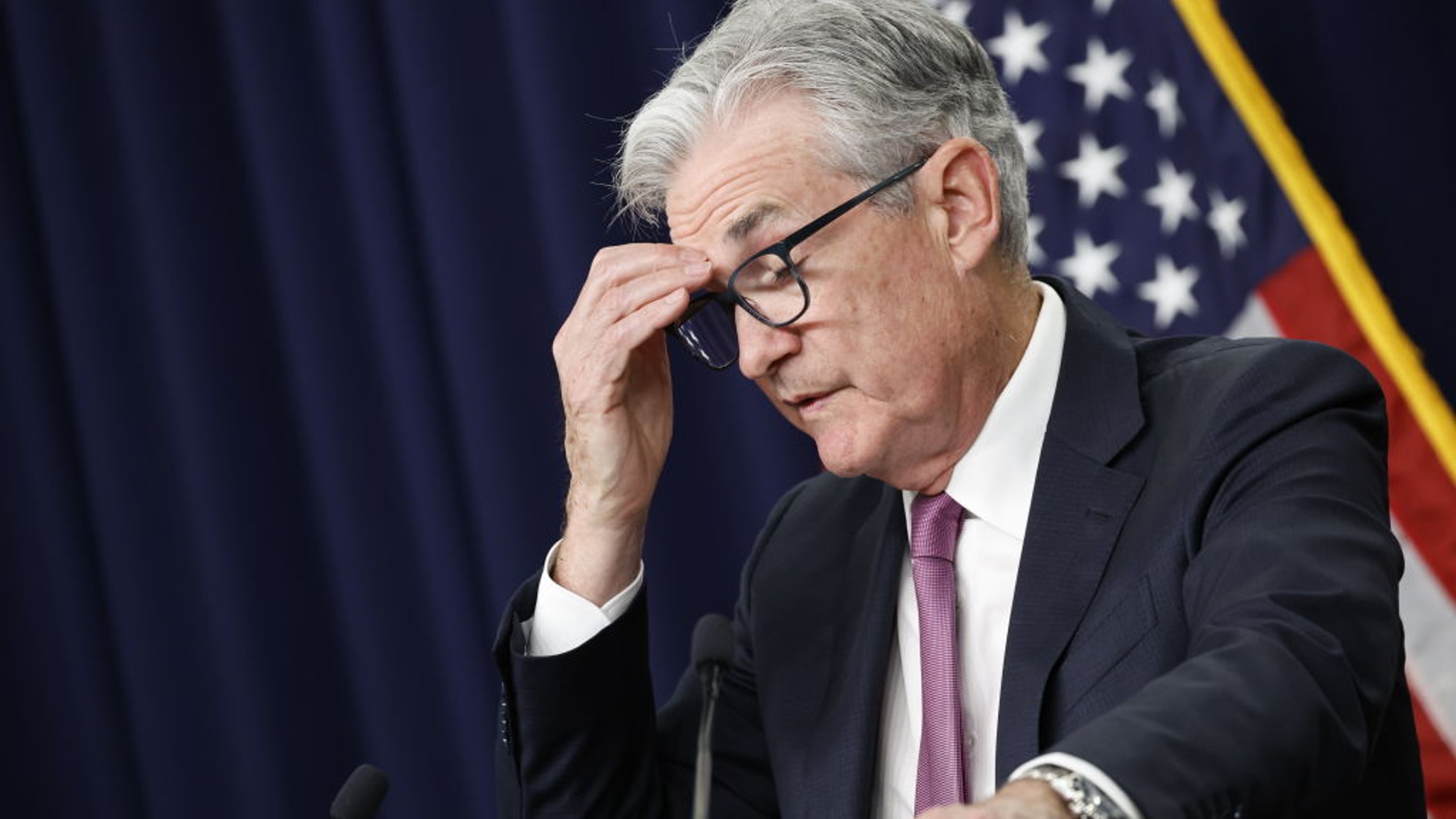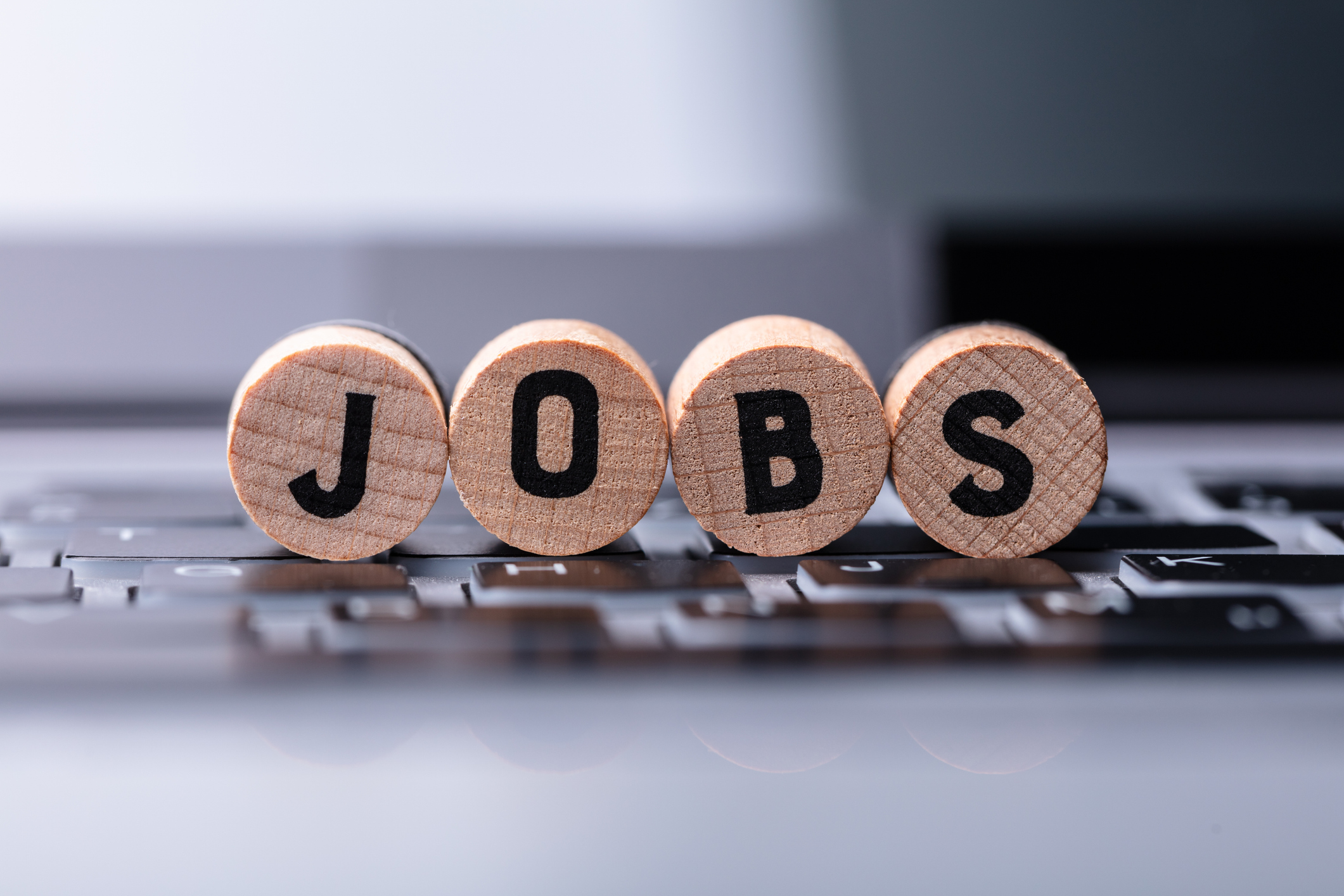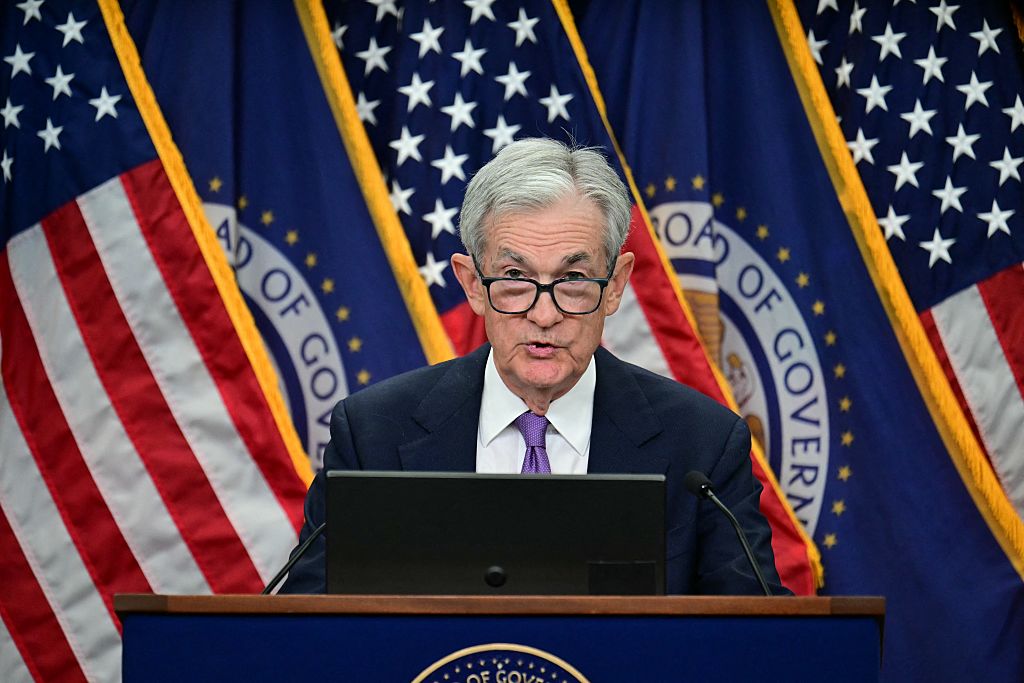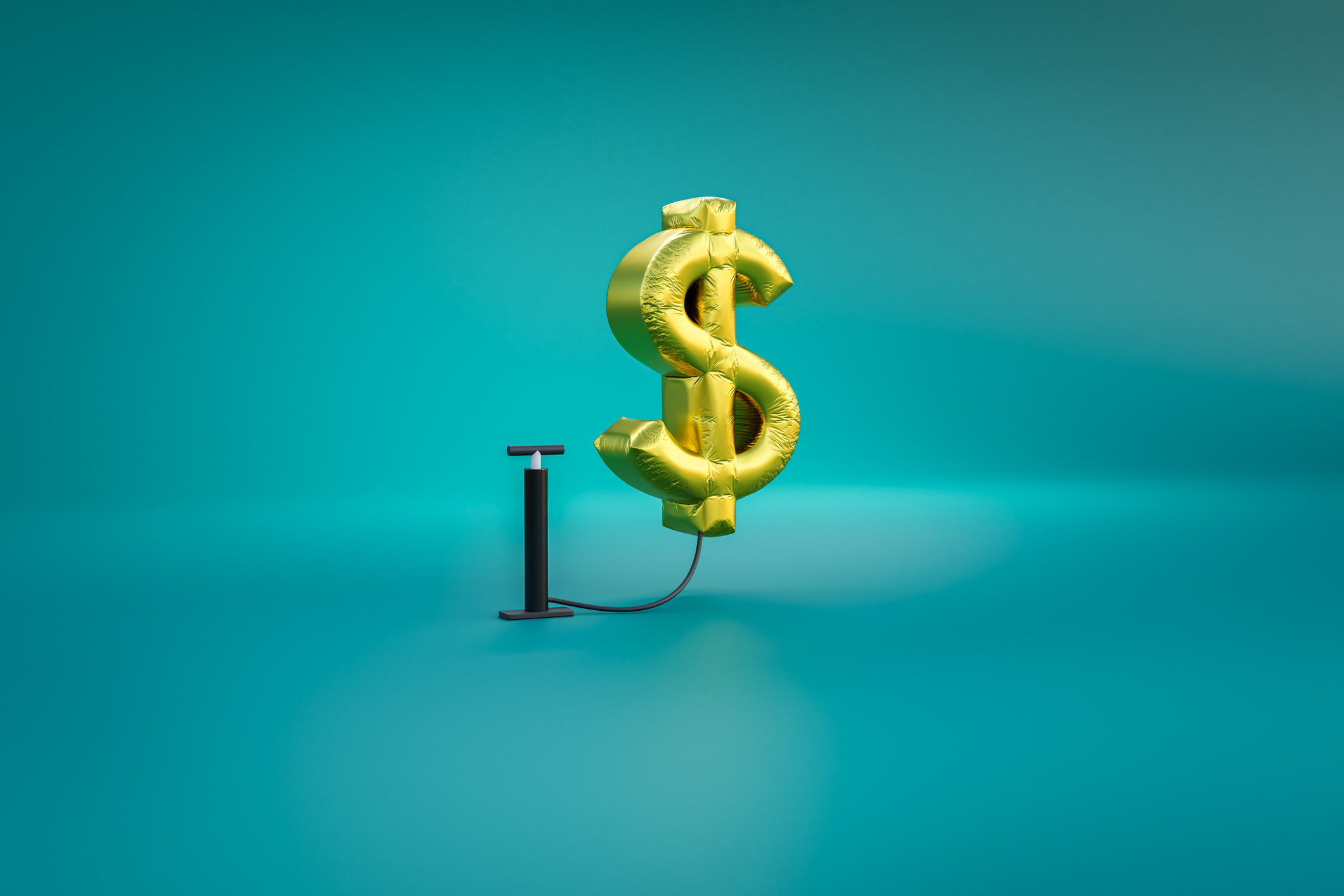Fed Rate Hike Meets Expectations, But What Next? Here's What the Experts Say
The Federal Reserve raised its key interest rate as expected, but all eyes are now on how many more rate hikes are left.


The Federal Reserve served up a widely expected third consecutive jumbo rate hike when it concluded its regularly scheduled two-day meeting on Wednesday. Chair Jerome Powell and the rest of the Federal Open Market Committee (FOMC) raised the federal funds rate by 75 basis points. (A basis point equals 0.01%.)
Although the move matched consensus expectations, a significant portion of the bond market – and plenty of traders and tacticians, for that matter – were bracing for a whopping 100 bp rate hike. Uncertainty over just how hawkish the Fed would reveal itself to be has cast a pall on equities over the preceding weeks, and so a rate hike of "only" three-quarters of a percentage point was actually met with some relief. Stocks sold off sharply when the Fed released its statement at 2 p.m. Eastern, but then drifted back into positive territory during Powell's press conference, which began a half-hour later.
Ultimately, however, the major indexes finished in the red. That's because the Fed's bottom line is that inflation is by no means under control. And while there might be ample anecdotal and emotional evidence pointing to the contrary, the economy is simply running too hot. An imbalance in supply and demand in the labor market and related strong real wage growth, snarled supply chains and a rising dollar are just some of the factors confounding monetary policymakers – not to mention corporate revenues and profit margins.
From just $107.88 $24.99 for Kiplinger Personal Finance
Become a smarter, better informed investor. Subscribe from just $107.88 $24.99, plus get up to 4 Special Issues

Sign up for Kiplinger’s Free Newsletters
Profit and prosper with the best of expert advice on investing, taxes, retirement, personal finance and more - straight to your e-mail.
Profit and prosper with the best of expert advice - straight to your e-mail.
As we've noted before, the Fed is striving to pull off everyone's dream scenario of a so-called soft landing. Yet history suggests such feats are exceedingly rare. No wonder then that prognosticators are increasingly fearful that the only way to achieve the Fed's 2% inflation target is for the economy to slip into a recession.
With the latest Fed policy pronouncement now on the books, it seemed a fitting time to round up some select reactions from economists, strategists, chief investment officers and the like. Below please find a smattering (at times edited for brevity) of what the pros are saying about Powell & Co.'s decision, the Fed chief's commentary and the outlook for asset prices in the days, weeks and months ahead:
- "The deciding factor in whether this meeting is positive or negative for risk assets wasn't the actual rate hike. The consensus was for a 75 bp hike – that's exactly what the market got. Instead, the deciding factor in whether this meeting is positive or negative for risk assets will likely be the Fed 'dots.' Specifically, it'll be the median projections for the 'terminal rate,' because at this point investors just want to know when rate hikes are going to stop. Over the past two weeks, the main reasons stocks have declined was because the market priced in a higher terminal rate than was previously expected. A higher terminal rate increases the chances the Fed engineers an economic 'hard landing' and that, in turn, weighs on stocks." – David Wagner, portfolio manager at Aptus Capital Advisors
- "In the coming months, we think the peak Fed rate pricing will essentially determine the peak 10-year rate for the cycle. The Fed is faced with an almost near certainty of overshooting, or hiking too much, due to lags and skepticism around softer data. Our forecasts are for rates to eventually decline due to the slowdown that the Fed is likely to produce. But between then and now, the risks generated by increasing urgency and an ominous Taylor Rule are very much to the upside. We continue to believe that based on the experience of the past five hiking cycles, the time to get long bonds is right around the Fed's last hike." – Ralph Axel, rates strategist at BofA Securities
- "From a portfolio perspective, we are underweight duration, or in other words, overweight cash and other ultra-short-term instruments. We believe the risk-reward ratio is skewed in favor of ultra-short term fixed income right now, more so because they yield more than longer term yields. At the same time, an inverted yield curve (shorter-term rates higher than longer-term rates) means that there are risks to economic growth as the Fed tightens policy. The main risk is that they tighten too hard and too fast, pushing the economy into a recession. This is not our base case at this point, but we believe the probability of that scenario is around 30% over the next year. And so, we are not eliminating longer-term treasuries from our portfolios. They serve the important role of diversification, especially amidst a recession, when investors run for safety." – Sonu Varghese, director, investment platform at Carson Group
- "The equity market's initial reaction thus far is some moderate de-risking, as the Fed's anticipation of a 'terminal rate' of 4.6% in 2023 is slightly higher than what has been priced in thus far. Still, stocks remain well-entrenched in the trading range that had been established off the June lows (3600 for the S&P), and we are of the opinion that U.S. equity markets remain in an early-stage bottoming/basing cycle that is likely to produce a 'U'-shaped recovery pattern against a higher nominal yield environment in the months ahead. For now, continue to expect choppy trading, with the potential for an oversold trading rally to materialize as early as this week." – Dan Wantrobski, technical strategist and associate director of research at Janney
- "With inflation remaining stubbornly high, the Fed had to implement yet another hawkish pivot by raising rates another 75 basis points and signaling to markets that additional increases in rates are appropriate to bring down inflation. Accompanying the Fed statement was an updated version of economic projections, and the most notable change was the median forecast for rates moving up to 4.6% in 2023 and 3.9% in 2024. This tells us that the Fed believes they need to be more aggressive with regards to policy by bringing rates even higher and holding them there for a longer period of time. Ultimately, the policy appears to be appropriate given the economic backdrop, but investors should prepare for rough seas ahead as aggressive Fed policy usually leaves a path of destruction in the wake behind." – Charlie Ripley, senior investment strategist at Allianz Investment Management
- "We got a hawkish 75 bp hike today, which the bond market sniffed out pretty well beforehand. 75 basis points was not surprising, however the new dot plot exceeded expectations for interest rates for the rest of this year and into 2023. The Fed signaled their willingness to keep rates higher for longer, financial conditions more restrictive into slowing growth and higher unemployment. The Summary of Economic Projections, (SEP) highlights expectations around slower economic growth, higher unemployment and stickier inflation moving forward." – Cliff Hodge, chief investment officer at Cornerstone Wealth
- "The Fed decided against surprising the market and increased rates by 0.75% instead of a full 1%, which a minority of people suggested the Fed should do, but they did say they were 'highly attentive to inflation risks' and that they are 'strongly committed to returning inflation to its 2% objective.' The market is beginning to believe that the Fed is willing to cause a recession in order to bring inflation back down. If that became a more consensus idea then the market would likely be down 30% from all-time highs (say 3350 on the S&P 500), but instead it is down 'only' 20% from the highs already, so you could say that the recession scenario is two-thirds priced in. We would continue to exercise caution in the near term as the Fed is determined to keep raising rates until inflation begins to drop closer to their Fed Funds target. Currently the Fed has a target of 3.0% to 3.25%, while the core inflation rate (YoY CPI) is 6.3%, so they are 300 bps apart and another 75 bp increase in November at their next meeting looks like a very likely outcome." – Chris Zaccarelli, chief investment officer, Independent Advisor Alliance
- "The narrow path to a soft landing requires that policymakers slow GDP growth to a below-potential pace to rebalance supply and demand in the labor market enough to bring down wage growth and ultimately inflation. Because consumer spending accounts for 68% of total GDP, maintaining a below-potential growth pace likely requires that consumption growth also remains soft. Strong real income growth suggests upside risk to real consumption growth next year, and raises the possibility that the Fed will need to hike more than we are currently expecting to keep GDP growth below potential. This is one reason why we could imagine the hiking cycle extending into 2023." – Joseph Briggs, economist, Global Investment Research Division at Goldman Sachs
- "As long-term investors, we do see value in sussing out the Fed's reasoning, and its possible impact on equity and fixed income portfolios. What seems clear at this point is the Fed will not take its foot off the pedal anytime soon. In this regard, there is an emerging consensus that rate hikes will be with us well into 2023. Net net, the Fed's stance and implied outlook, persistent inflation, global recessions, and a looming increase in hostilities between Russia and Ukraine will likely provide a rough ride for equities in the near term. One silver lining, however, is that bond yields look far more attractive today. With the 10-year Treasury yield near 3.6%, and corporate and other classes higher, investors have a clearer path to better expected bond returns moving forward." – Daniel Berkowitz, senior investment officer at investment manager Prudent Management Associates
- "Investors will be looking for clarity on the extent of the Fed's tightening campaign and we suspect they'll be disappointed. Core pricing measures are beginning to show the degree of pricing pressures beyond energy and food, complicating policy decisions going forward. Quantitative tightening also adds an element of uncertainty, and we expect further upward pressure on market interest rates. As a result, we look for the June equity market lows to be retested in the coming weeks. Third quarter earnings may also weigh on sentiment, as companies revise their outlooks lower. Fortunately, history shows improved market performance following midterm elections, so we encourage investors to maintain targeted allocations." – John Lynch, chief investment officer at Comerica Wealth Management
- "The Fed continues to pursue a policy focused on lagging and contemporaneous indicators, with seemingly no clue as to what forward-looking barometers are saying about inflation in the future. It hiked +75 basis points to a 3.00%-3.25% range on the funds rate and went on to project another +125 basis points at the final two meetings of this year. And its growth forecasts for real GDP dropped to +0.2% from +1.7% for 2022, and to +1.2% from +1.7% for 2023. Ultimately, Powell continuing to tighten policy (remember QT as well!) into an economic downturn will do more than just kill inflation — it will kill the economy in the process." – David Rosenberg, founder and president of Rosenberg Research
- "Chair Powell said the Fed was sticking to the powerful policy themes revealed in Jackson Hole last month. And, importantly, that the FOMC is not yet at the point where it’s 'appropriate to slow the pace of increases.' Bottom line: It’s looking like a fourth consecutive 75 bp rate hike on November 2nd." – Michael Gregory, deputy chief economist at BMO Capital Markets Economic Research
- "The good news is that policymakers expect inflation to steadily slow over the next few years, but higher rates are also expected to inflict greater pain on the economy. Estimates for real GDP growth next year were revised lower and, with a median of 1.2%, are more clearly below the economy's potential growth rate. More telling, however, was the upward adjustment to unemployment rate projections in 2023. The median estimate among participants rose to 4.4%, which would be nearly a percentage point above the low of the current cycle. All told, the Committee appears to be inching toward our own view that it will take a mild recession to get inflation firmly back to the 2% target." – Jay Bryson, chief economist at Wells Fargo Securities
- "The Committee hiked rates at this magnitude for the third consecutive time and the Fed signaled 'ongoing increases…will be appropriate.' We expect a 50 basis point hike at the next meeting in November with additional hikes in the following meetings. If the economy shows resilience, the Fed Funds Rate could reach 4.50% by mid-2023. The impacts from recent Fed rate hikes are being quickly passed through to the mortgage market and other credit markets. Areas I watch are auto sales, credit card usage, home sales & renovations and personal loan demand. Unfortunately, other areas of the real economy have yet to feel the full impact of these aggressive rate hikes. So far, recession indicators are holding up so our base case is still a soft landing but risks to the downside, especially in Q1 of next year." – Jeffrey Roach, chief economist at LPL Financial
- "The coming weeks and months will be very important for evaluating how the real economy adjusts to policy adjustments. Historic fiscal stimulus infusions have come through the system, with more coming, and hence the lags can take longer to see than would have been the case in the past. We think the Fed will move another few times from here, with the data determining the veracity of that and how much longer they will have to go. Still, we do think that markets, and consequently the economy, will become 'Fed up' with too much tightening, if growth (and employment) are tangibly slowing alongside of these tighter policy moves. Is the economy there yet? No, not yet, but investors are clearly watching every economic and corporate report and survey to see where inflection points are presenting themselves (including global conditions). The Fed should be closer after today to being receptive to signs of inflection points. We think they are, and are looking for places to pause and watch their aggressive policy work through its way through the system. The odds are that they see those signs over the coming months." – Rick Rieder, BlackRock’s chief investment officer of Global Fixed Income and head of the BlackRock Global Allocation Investment Team
- "In response to the September FOMC meeting, where the median FOMC participant is projecting more near-term rate increases than we had expected, we revise our outlook higher for the target range for the federal funds rate in the current tightening cycle. We now expect the Fed to raise its policy rate by 75 bp in November and 50 bp in December, followed by two 25 bp rate hikes in February and March of next year. This would bring our new forecast for the terminal target range for the funds rate to 4.75% to 5.0%. Previously we had anticipated 100 bp of hikes after the September FOMC meeting for a terminal rate of 4.0% to 4.25%. Hence, our revised outlook involves another 75 bp of rate hikes relative to our prior baseline forecast." – Michael Gapin, U.S. economist at BofA Securities
- "The FOMC signaled that they intend to get the fed funds rate to 4.5% by the end of this year and then hold the fed funds rate at that restrictive level for more than a year while inflation declines to their 2% goal. A recession, higher unemployment, lower stock prices and a correction in the housing market are all likely outcomes as they move to their goal." – Lundy Wright, senior vice president and portfolio manager at Weiss Multi-Strategy Advisers
Profit and prosper with the best of Kiplinger's advice on investing, taxes, retirement, personal finance and much more. Delivered daily. Enter your email in the box and click Sign Me Up.

Dan Burrows is Kiplinger's senior investing writer, having joined the publication full time in 2016.
A long-time financial journalist, Dan is a veteran of MarketWatch, CBS MoneyWatch, SmartMoney, InvestorPlace, DailyFinance and other tier 1 national publications. He has written for The Wall Street Journal, Bloomberg and Consumer Reports and his stories have appeared in the New York Daily News, the San Jose Mercury News and Investor's Business Daily, among many other outlets. As a senior writer at AOL's DailyFinance, Dan reported market news from the floor of the New York Stock Exchange.
Once upon a time – before his days as a financial reporter and assistant financial editor at legendary fashion trade paper Women's Wear Daily – Dan worked for Spy magazine, scribbled away at Time Inc. and contributed to Maxim magazine back when lad mags were a thing. He's also written for Esquire magazine's Dubious Achievements Awards.
In his current role at Kiplinger, Dan writes about markets and macroeconomics.
Dan holds a bachelor's degree from Oberlin College and a master's degree from Columbia University.
Disclosure: Dan does not trade individual stocks or securities. He is eternally long the U.S equity market, primarily through tax-advantaged accounts.
-
 Nasdaq Sinks 418 Points as Tech Chills: Stock Market Today
Nasdaq Sinks 418 Points as Tech Chills: Stock Market TodayInvestors, traders and speculators are growing cooler to the AI revolution as winter approaches.
-
 23 Last-Minute Gifts That Still Arrive Before Christmas
23 Last-Minute Gifts That Still Arrive Before ChristmasScrambling to cross those last few names off your list? Here are 23 last-minute gifts that you can still get in time for Christmas.
-
 The Rule of Compounding: Why Time Is an Investor's Best Friend
The Rule of Compounding: Why Time Is an Investor's Best FriendDescribed as both a "miracle" and a "wonder," compound interest is simply a function of time.
-
 The Delayed November Jobs Report Is Out. Here's What It Means for the Fed and Rate Cuts
The Delayed November Jobs Report Is Out. Here's What It Means for the Fed and Rate CutsThe November jobs report came in higher than expected, although it still shows plenty of signs of weakness in the labor market.
-
 December Fed Meeting: Updates and Commentary
December Fed Meeting: Updates and CommentaryThe December Fed meeting is one of the last key economic events of 2025, with Wall Street closely watching what Chair Powell & Co. will do about interest rates.
-
 If You'd Put $1,000 Into Coca-Cola Stock 20 Years Ago, Here's What You'd Have Today
If You'd Put $1,000 Into Coca-Cola Stock 20 Years Ago, Here's What You'd Have TodayEven with its reliable dividend growth and generous stock buybacks, Coca-Cola has underperformed the broad market in the long term.
-
 If You Put $1,000 into Qualcomm Stock 20 Years Ago, Here's What You Would Have Today
If You Put $1,000 into Qualcomm Stock 20 Years Ago, Here's What You Would Have TodayQualcomm stock has been a big disappointment for truly long-term investors.
-
 The Delayed September Jobs Report Is Out. Here's What It Means for the Fed
The Delayed September Jobs Report Is Out. Here's What It Means for the FedThe September jobs report came in much higher than expected, lowering expectations for a December rate cut.
-
 If You'd Put $1,000 Into Home Depot Stock 20 Years Ago, Here's What You'd Have Today
If You'd Put $1,000 Into Home Depot Stock 20 Years Ago, Here's What You'd Have TodayHome Depot stock has been a buy-and-hold banger for truly long-term investors.
-
 October Fed Meeting: Updates and Commentary
October Fed Meeting: Updates and CommentaryThe October Fed meeting is a key economic event, with Wall Street turned into what Fed Chair Powell & Co. did about interest rates.
-
 The Delayed September CPI Report is Out. Here's What it Signals for the Fed.
The Delayed September CPI Report is Out. Here's What it Signals for the Fed.The September CPI report showed that inflation remains tame – and all but confirms another rate cut from the Fed.